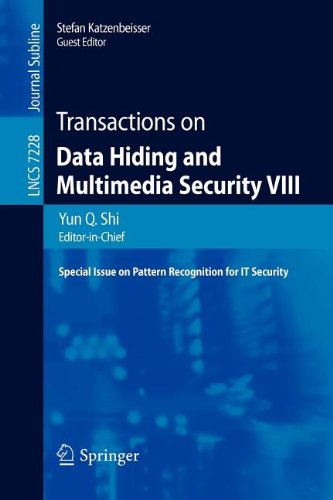

Most ebook files are in PDF format, so you can easily read them using various software such as Foxit Reader or directly on the Google Chrome browser.
Some ebook files are released by publishers in other formats such as .awz, .mobi, .epub, .fb2, etc. You may need to install specific software to read these formats on mobile/PC, such as Calibre.
Please read the tutorial at this link: https://ebookbell.com/faq
We offer FREE conversion to the popular formats you request; however, this may take some time. Therefore, right after payment, please email us, and we will try to provide the service as quickly as possible.
For some exceptional file formats or broken links (if any), please refrain from opening any disputes. Instead, email us first, and we will try to assist within a maximum of 6 hours.
EbookBell Team

5.0
90 reviewsSince the mid 1990s, data hiding has been proposed as an enabling technology for securing multimedia communication, and is now used in various applications including broadcast monitoring, movie fingerprinting, steganography, video indexing and retrieval, and image authentication. Data hiding and cryptographic techniques are often combined to complement each other, thus triggering the development of a new research field of multimedia security. Besides, two related disciplines, steganalysis and data forensics, are increasingly attracting researchers and becoming another new research field of multimedia security. This journal, LNCS Transactions on Data Hiding and Multimedia Security, aims to be a forum for all researchers in these emerging fields, publishing both original and archival research results.
This special issue contains five selected papers that were presented at the Workshop on Pattern Recognition for IT Security, held in Darmstadt, Germany, in September 2010, in conjunction with the 32nd Annual Symposium of the German Association for Pattern Recognition, DAGM 2010. It demonstrates the broad range of security-related topics that utilize graphical data. The contributions explore the security and reliability of biometric data, the power of machine learning methods to differentiate forged images from originals, the effectiveness of modern watermark embedding schemes and the use of information fusion in steganalysis.